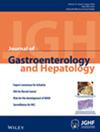Cross-sectional and Mendelian randomization study of fibroblast growth factor 19 reveals causal associations with metabolic diseases
Abstract
Background and Aim
Fibroblast growth factor 19 (FGF19) is an intestinal-derived factor that plays a role in metabolic diseases. We performed a differential study of circulating FGF19 levels and investigated the causal effects of FGF19 on metabolic diseases using Mendelian randomization (MR).
Methods
Firstly, 958 subjects were included in the physical examination center of affiliated hospital from January 2019 to January 2021. Dividing the subjects into different subgroups to compare FGF19 levels. We conducted a two-sample MR analysis of genetically predicted circulating FGF19 in relation to alcohol, cardiovascular and metabolic biomarkers and diseases, and liver function biomarkers using publicly available genome-wide association study summary statistics data.
Results
The circulating FGF19 levels in nonalcoholic fatty liver disease (NAFLD) patients were lower than those without NAFLD (P < 0.001). The FGF19 levels in participants with obese were lower than those without obese (P < 0.001). In two-sample MR analyses, genetically predicted higher circulating FGF19 levels was significantly associated with lower aspartate aminotransferase, γ-glutamyltransferase, triglycerides, total cholesterol, low-density lipoprotein, and C-reactive protein concentrations (P < 0.05) and a negative correlation with cardiovascular disease and cirrhosis whereas a positive association with type 2 diabetes mellitus (P < 0.05).
Conclusions
Our study found that circulating FGF19 levels were lower in NAFLD and obese populations. Additionally, our MR research results support the causal effects of FGF19 on improved liver function, lipids, and reduced the occurrence of inflammation, cardiovascular disease, and cirrhosis. We found a positive correlation with diabetes, which may indicate a compensatory increase in regulating above FGF19 resistance states in humans.

 求助内容:
求助内容: 应助结果提醒方式:
应助结果提醒方式:


